
Jun 18, 2021 | Career, Entrepreneurship, Gratitude

2021 marks the 10-year anniversary for my business, and I’m feeling such a sense of gratitude and celebration with this milestone.
Reaching double digits
There’s something about being in business for a decade that makes me feel real and legit. Not in the way of “I need someone or something to make me feel legitimate,” but rather legitimacy that’s derived from deep satisfaction of sustaining and thriving doing the work I most love to do with the clients I love working with. I get to do this! …on my own terms
I appreciate the perspective of Tim Ferris, author of “The 4-Hour Workweek.” He offers that living the dream isn’t about waiting to retire to live the life you want to live, but instead, consider: What work would you do if you could never retire? What life would you live if retirement wasn’t an option?
My answer? Exactly the work and life I’m living right now.
What I’m proudest of
As my years as a business owner add up, I know that I’m living my purpose. I wake up every day feeling honored that I get to help organizations and their leaders know and live theirs. I’ve intentionally designed a business model with services that get to the core of a client’s purpose, mission, and values, and help them deploy their gifts in the world. Idyllic? Maybe. And what I know for sure…it’s impactful beyond measure.
Heaps of gratitude
I could fill countless gratitude journals about the experience of business ownership and how it feeds my soul. For starters, I’m most grateful for…
- Unending support from friends and family.
- Awesome clients from whom I learn so much and who entrust me as their partner.
- Affiliations and partnerships with organizations I respect and enjoy working with.
- Learning more about who I am and the imprint I most want to have in the world.
- Recognizing the abundance of the universe – there’s a stream that constantly provides (even when lean), and I learn to trust walk and know I’m held by this power and light.
- Generosity and a community of peer colleagues around the world.
Savoring the celebration
Turning 10 is a big awesome deal! I’m excited to relish in it and share some of the peak moments with you here on my blog – successes, failures, lessons learned, and stories of my rock star clients Stay tuned!
 Hi, I’m Jeanie Duncan. I work with individuals and organizations as a transformation partner to help them unlock their Truth, discover authentic value, and create meaningful impact in the world. I believe when we are truly aligned with our purpose, we can live and perform at our highest potential. With over 25 years of experience as an executive, CEO, consultant, and coach, I offer strategic, knowledgeable, and experienced guidance for those who are ready to take the courageous leap toward true transformation.
Hi, I’m Jeanie Duncan. I work with individuals and organizations as a transformation partner to help them unlock their Truth, discover authentic value, and create meaningful impact in the world. I believe when we are truly aligned with our purpose, we can live and perform at our highest potential. With over 25 years of experience as an executive, CEO, consultant, and coach, I offer strategic, knowledgeable, and experienced guidance for those who are ready to take the courageous leap toward true transformation.

Jun 10, 2021 | Action, Authenticity, Courage, Intention, Leadership, Truth
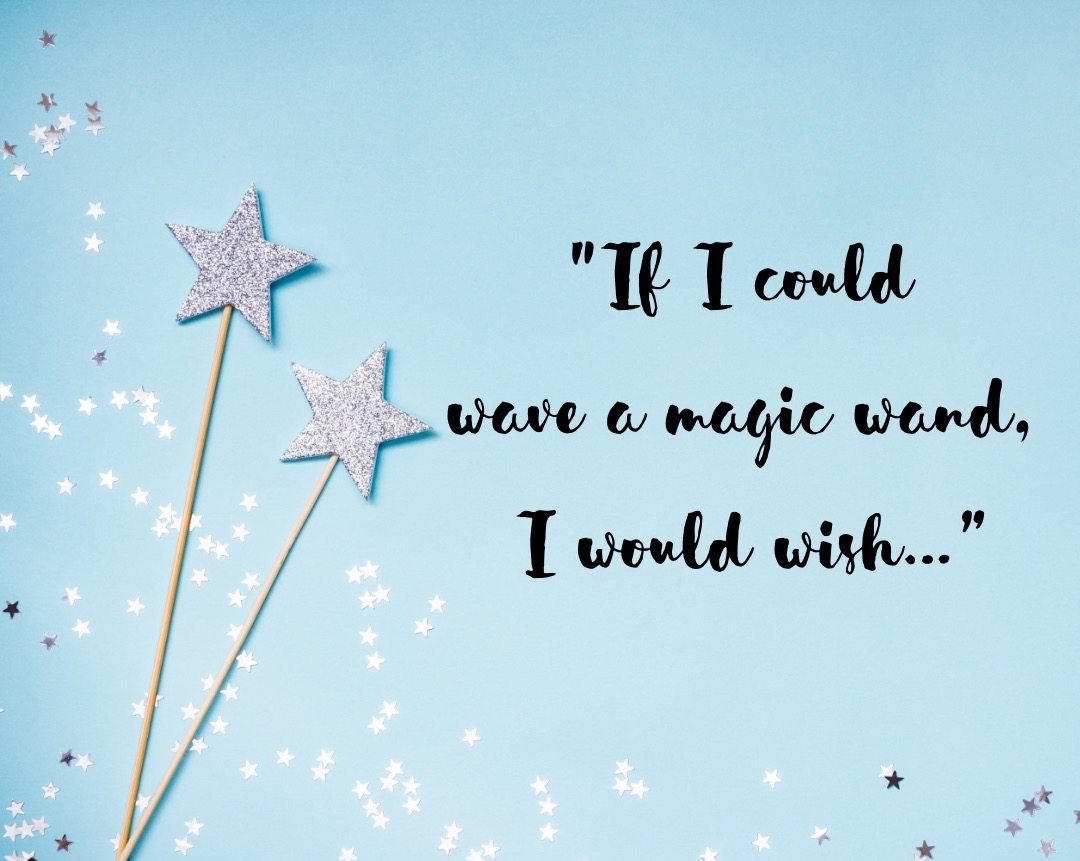
…I would wish for organizations and leaders everywhere to seek to know their truth and be bold and courageous enough to live it.
I’ve witnessed the power of “knowing and living your truth” both in my own life experiences as well as with my clients in theirs. To me, it’s the difference between living an ordinary versus an extraordinary life. Between sleep walking through your life versus tapping into your most full, amazing self and unleashing your gifts in the world.
My “one wish” reflects the essence of how I most want to live my life and help others live theirs. I like the image of water and stepping stones to describe it.
Water represents two things as a constant…
Presence: You can’t seek to know and live your truth if you’re not paying attention. If you’re caught up in all the stuff of life and not noticing, you’re gonna miss it. And I get it, lives are full. Reeeally full. The aim is to “do” your rich, robust life while slowing the pace enough to “be” and focus your attention. It’s both challenging and possible, requiring some serious, conscious choice making, not to mention loads of courage.
Knowing and Loving Yourself: You’ve got to care…about you. YOU have to matter to you. Ground zero in knowing yourself and knowing your truth is first loving yourself (and for organizations, it’s about loving the “entity” as a living breathing organism…its people, mission, purpose, its reason for being).
Next, the stones represent…
a progression of steps I believe are present on the pathway to knowing and ultimately living your truth – what I call the “truth journey.”
- Presenting moment: First, there’s a trigger – an event or situation that swings a person’s or an organization’s pendulum to either dissonance (things like exhaustion, burn-out, hopelessness, crisis, failure, conflict) or resonance (imagine ease, energy, joy, excitement, thriving). You have this experience, and your emotions get stirred, often strongly. Accompanying this moment, is an internal sensation – I’ve experienced it as unsettledness, restlessness, a stirring, or insatiable yearning. And like a nagging 3-year-old, it just won’t go away until I address it head on.
- Stillness: Regardless of whether the experience is positive or negative, it’s important to stop and “sit with it.” If it’s particularly challenging, our tendency is to push it away, busy ourselves, or pretend altogether that it doesn’t exist. Resist the urge! It sounds counterintuitive to say “C’mon! Pull up a chair and sit with that misery for a while!” But it really is important to do just that – to stop, get quiet, be with what you’re sensing and thinking, and reflect, “What is this ‘thing’ trying to communicate to me? What knowledge and information can I get from it?”
- Clarity: In this pause and inquiry of the stillness, the answers could come quickly, almost instantly, or it could take days, weeks, months, even. I promise, there’ll come a time of greater clarity when the knowing appears – it might arrive with gusto like an ah-ha or break through, or it can come almost unnoticed as the slightest movement like a cloud floating by. You’ll know it when you sense a shift inside you – the dots connect, suddenly things make sense, or you might feel an ease, a lightness, or a rise in your energy.
- Choice: Next comes the most pivotal point in the process – you arrive at a choice point. Let’s say you’ve been frustrated in your job for a while. You haven’t been happy for a long time, maybe never. You’re burned out, exhausted, and feeling empty. Then comes the “event” that causes you to burst, “I’ve had it! I’m done!” And here you are…hello choice. You start contemplating your situation and exploring options. Often what happens here is we do what’s easy and take the path of least resistance: we stay, we tolerate, we settle, we endure. It’s here that I stand the firmest (and most compassionate) with my clients, because I can see what they can’t – their gifts, potential, resources, and courage (even if only a glimmer). I help them consider choices that empower, harness their strengths, and connect them to their passion.
- Action: In my opinion, the most important consideration here is that your actions align with your values and what most fulfills you. One of the perils that gets in the way of action is living in the place of “should.” With the job example above…“I should stay. After all, people are counting on me, proving my loyalty is important, it might get better…” If you’re an organization considering these steps, it might sound like “We should continue this program. We’ve been delivering it for 20 years, and a lot of people count on us. The program may be making little revenue and have ‘run its course,’ but there would be a public outcry if we stopped.” To take action, first tune into your “why,” your purpose, to what calls to you and lights you up. From there, make your plan and work your plan.
- Live: Once in action, live fully into the choice you’ve made and the path forward…no second guessing, no wondering if you did the right thing. Bravely, boldly go! As an individual, of course there’ll be personal check-ins, and you’ll continue to reflect and refine your path forward. As an organization, there will be assessment, evaluation, and measuring progress. That’s simply being smart and responsible. Lastly, remember that you are surrounded with resources you can leverage wisely: people, time, money, as well as practices like self-care, meditation, good nutrition, and fitness.
 Hi, I’m Jeanie Duncan. I work with individuals and organizations as a transformation partner to help them unlock their Truth, discover authentic value, and create meaningful impact in the world. I believe when we are truly aligned with our purpose, we can live and perform at our highest potential. With over 25 years of experience as an executive, CEO, consultant, and coach, I offer strategic, knowledgeable, and experienced guidance for those who are ready to take the courageous leap toward true transformation.
Hi, I’m Jeanie Duncan. I work with individuals and organizations as a transformation partner to help them unlock their Truth, discover authentic value, and create meaningful impact in the world. I believe when we are truly aligned with our purpose, we can live and perform at our highest potential. With over 25 years of experience as an executive, CEO, consultant, and coach, I offer strategic, knowledgeable, and experienced guidance for those who are ready to take the courageous leap toward true transformation.

Mar 21, 2021 | Action, Courage, Intention, Leadership, Vulnerability
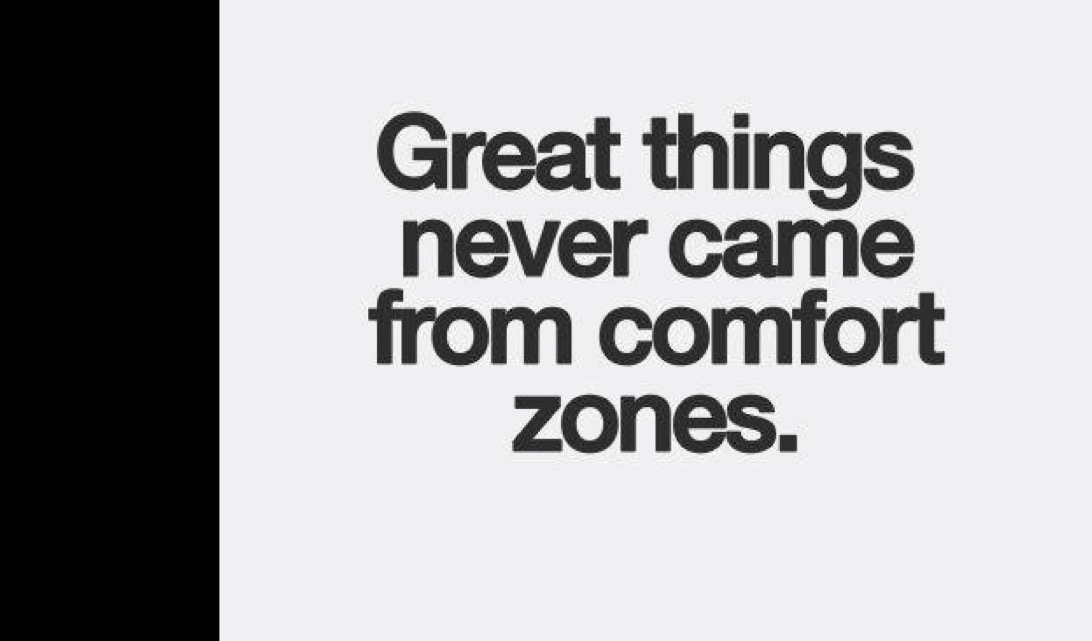
“Embracing the suck” is part of the path to mastering anything new says social scientist, Brene Brown.
These days, my “new” is learning to write the stories of the amazing, courageous women I’ve interviewed for my book…I’m learning to be a storyteller, essentially. And it’s hard!
It’s hard because
- I feel responsible for someone’s story. I want to write it in such a way that I honor and convey the core essence of their narrative. I want my reader to really see the women and their experience.
- I’m so accustomed to business writing, which is all about keeping the message short, direct, and to the point. Storytelling requires me to develop a style of expounding, elaborating, and being more colorful and emotive in my writing.
- I’m working to find the balance of staying focused and on point, yet sharing enough that my reader is drawn in, as if riding a wave beside my “character,” following the rise and fall of the story’s build, the peak, and the close.
The work is stretching and challenging me in new ways. The difficulty persists, but so do I. I show up even when I don’t feel creative. I make myself write – “just get words on the paper,” I tell myself, “and the flow will come.” I feel myself growing, not only in my ability to write the stories, but also in how I tell stories to others. I’m learning about the art and delivery.
This path, and sometimes anguish, of learning something new is what I refer to as The Learning Curve. I have the (ahem) joy of being in it right now!
The Learning Curve
Whenever we come up on a learning opportunity, we have a choice of two ways to go:
- We can decide to go for it, or
- We can choose to stay right where we are…“the comfort zone”

If we choose to go for it, we’re sure to have some new muscle building with a likely series of trying the new thing and failing. It’s like learning to ride a bike as a kid and taking the training wheels off for the first time. We’re gonna fall – probably over and over and over again. Attempting and failing is hard, it’s embarrassing, it…sucks. It makes us want to quit!
If we decide instead to stay the course of where we are, it’s easy. We’re comfortable. It feels good. In other words, we can “do it in our sleep.” But we also miss out on learning new things, opening up possibility, and even discovering something we might love or be really good at, that we had no idea of before.
Anytime I come up on something new – it could be a job opportunity, realizing I need to develop a skill, or fixing something in my house – I think about The Learning Curve and weigh my options: Do I really want to do this? Is it worth it? What’s the worst-case scenario?
Sometimes I decide not to take on the challenge, and I pass on the potential promotion, delegate the task, or call that plumber. That can feel really good – and necessary. But sometimes I decide to step up, stretch myself, and I go for it, I take the leap, I DIY it. And there’s a thrill in that too. Even though it brings pain with it, which it is certain to do!
What new thing are you learning these days? How’s it going?
 Hi, I’m Jeanie Duncan. I work with individuals and organizations as a transformation partner to help them unlock their Truth, discover authentic value, and create meaningful impact in the world. I believe when we are truly aligned with our purpose, we can live and perform at our highest potential. With over 25 years of experience as an executive, CEO, consultant, coach, and writer, I offer strategic, knowledgeable, and experienced guidance for those who are ready to take the courageous leap toward true transformation.
Hi, I’m Jeanie Duncan. I work with individuals and organizations as a transformation partner to help them unlock their Truth, discover authentic value, and create meaningful impact in the world. I believe when we are truly aligned with our purpose, we can live and perform at our highest potential. With over 25 years of experience as an executive, CEO, consultant, coach, and writer, I offer strategic, knowledgeable, and experienced guidance for those who are ready to take the courageous leap toward true transformation.
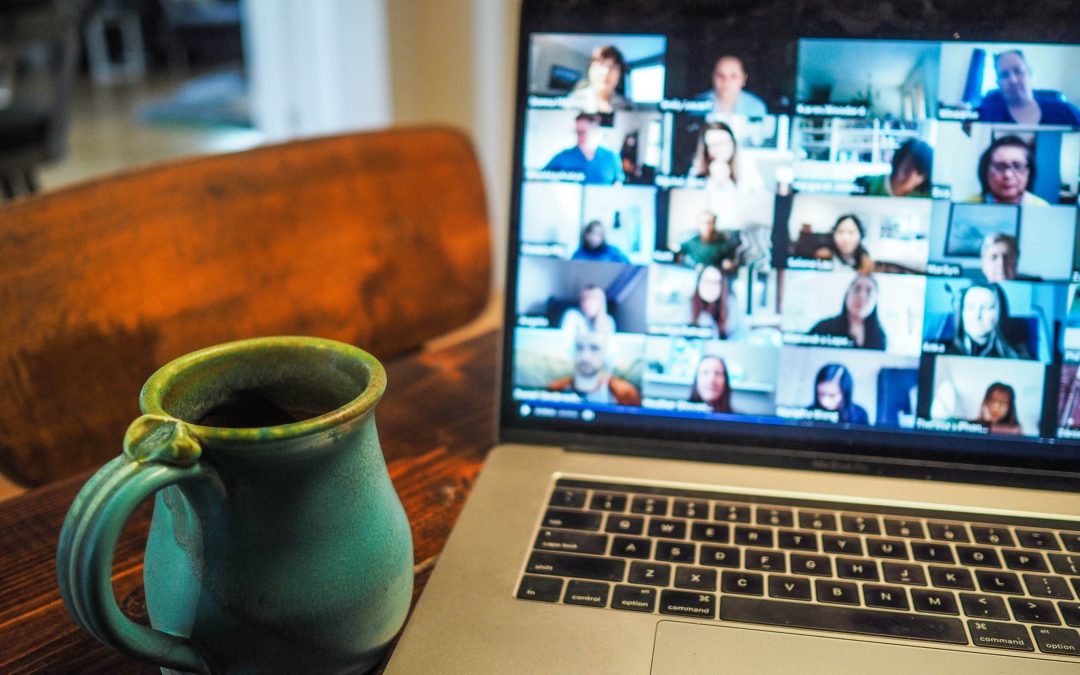
Jan 28, 2021 | Leadership, Personal Brand, Strategy
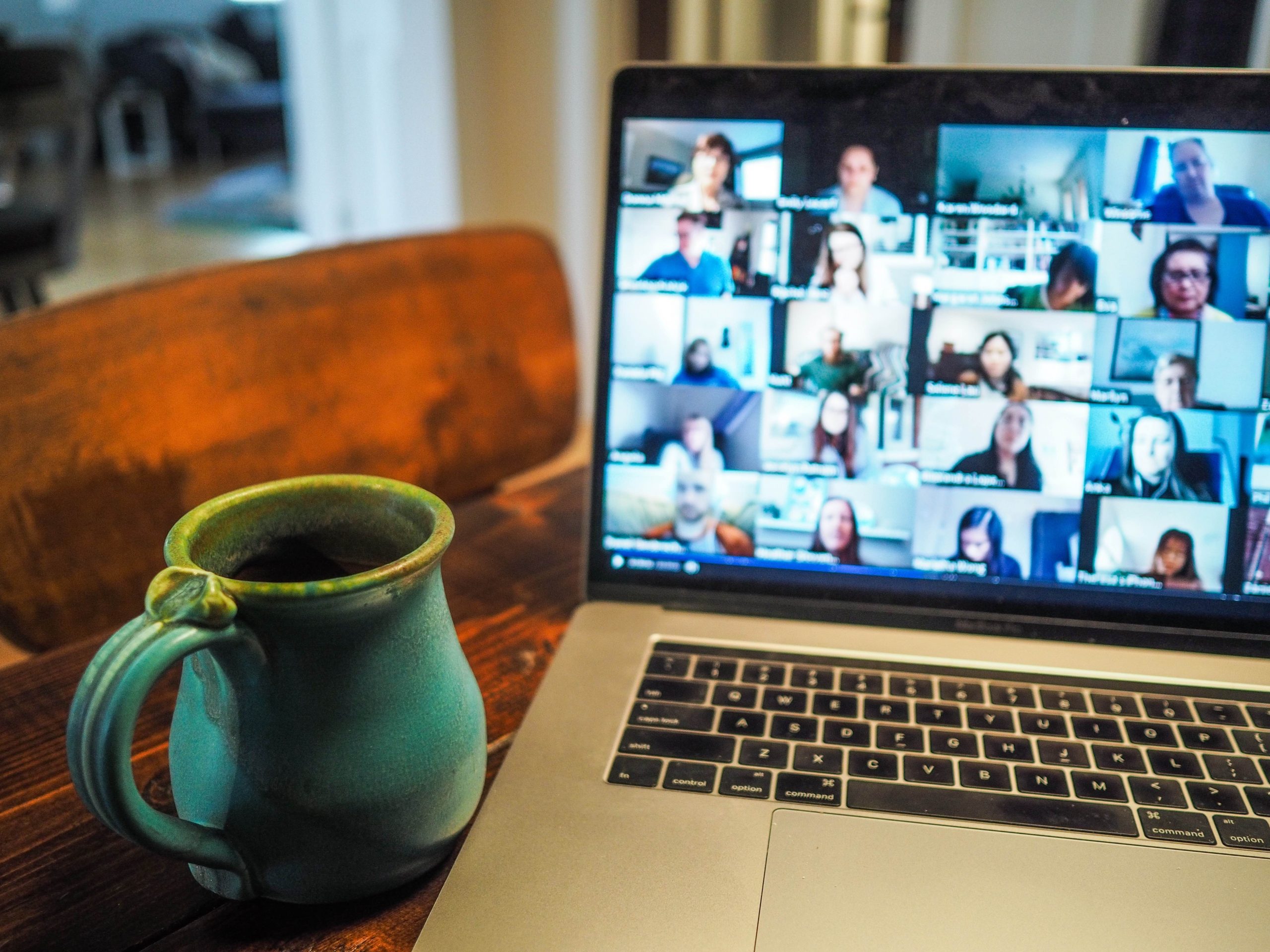 Remember the days when we could physically gather for meetings, programs, and events at work? I find myself longing for it as we’re about to “lap ourselves,” approaching month #11 in the COVID era.
Remember the days when we could physically gather for meetings, programs, and events at work? I find myself longing for it as we’re about to “lap ourselves,” approaching month #11 in the COVID era.
Today, most of us are spending half or more of our time in a virtual space with clients, team members, and other colleagues. In this reality, communicating our unique leadership brand and presence requires us to be mindful of a whole new range of factors, to get creative, and tap into new and different resources in order to effectively and compellingly convey who we are… where often our “stage” isn’t much bigger than a postage stamp.
Back when we could gather in-person, we had a more accessible and dynamic environment and range in which to present our unique “essence.” It was just easier. By merely walking into a room, you could command attention and convey presence.
It all starts with knowing your personal leadership brand.
We’re not used to thinking of ourselves as a “brand.” Thoughts of brand more often conjure up images of our favorite coffee or shoes, the car we drive or the makeup we wear (remember makeup? :0 ). But even if you’ve never thought about your own personal brand, you have one. You’re “presenting it” everywhere you go…yes, even if you’re only walking from your kitchen down the hall to your office. So, why not take a more mindful approach and really be in charge of this brand! It’s just as important in the virtual environment as it is in-person and it requires knowing what works in that setting and making it work for you.
Start defining your brand by considering these questions:
- What do I bring to the table? Think about your skills, talents, expertise, experiences.
- What is uniquely me? What sets you apart? There’s no one else on the entire planet quite like you! What do people get with you that they don’t get with anyone else?
- What is my brand promise? Think about what you deliver.
- What do I stand for? Consider your core values and what matters most to you.
- How do I want to be described? When you “leave the room,” what would others to say about you? What adjectives would they use to describe you?
Next, give thought to how you deliver your brand.
I think of delivering your brand as your presence, or executive presence – the “how” of presenting yourself. How can you present your brand most effectively to:
show up in the most impactful way,
accomplish your goals,
convey your key messages, and
achieve your aspirations?
In her book Executive Presence, Sylvia Ann Hewlett offers, “No man or woman attains a top job, lands an extraordinary deal, or develops a significant following without the combination of confidence, poise, and authenticity that convinces the rest of us we’re in the presence of someone who’s the real deal.”
In essence, Hewlett is saying you get there because you’re being purposeful and intentional about who you are and how you show up.
She lays out the key components of what comprise executive presence: gravitas, communication, and appearance. These elements help you take what’s uniquely YOU and unleash it in the world.
Gravitas
In short, gravitas is the ability to exude integrity, and confidence under the most pressing circumstances. It’s a combination of qualities that conveys you’re in charge or deserve to be.
Communication
As it relates to presence, effective communication is as much, if not more, about the “how” you communicate than the “what” you communicate.
Research shows that people pay the most attention to our nonverbal messages. In fact, up to 93% of your message is derived from how you say it.* 93%! This statistic drives home the need to pay attention to these elements of our messaging and utilize our nonverbal communication strategically for the greatest impact and connection.
“Strong communication skills are an accurate representation of whether you qualify as a leader or not,” says Hewlett. “You have a five-second shot to first engage with your audience after you meet them.” Make it count!
- Pay attention to your body language and posture
- Be human; let them see you
- Read the people in the room and adjust your way/style as needed
- Share insights through stories rather than abstract ideas.
- Focus on the technical aspects of your speech, things like reducing filler words and controlling the pitch and volume
Appearance
Lastly, Hewlett offers that your outward presence (clothing, accessories, hair, expression, etc.) shouldn’t distract people from your professional competence, but instead should emphasize it. “If it’s not adequate, you won’t hold their attention. It says, ‘I’m capable of and in control of presenting myself and, therefore, responsible to handle whatever else I am entrusted to do.’”
Hewlett highlights elements of appearance that include:
- Being polished and groomed
- Physical demeanor
- Attire that positions you for your day…or your next job
Putting it together – Your brand and presence in the virtual realm
Specifically for the virtual realm, consider these tips to help you engage and successfully present yourself:
- Position your camera where it’s at eye level and look directly at the video camera – not the people – to hold eye contact with your audience. It’s okay to look at the other faces in your video conference but do so only occasionally if you’re the one talking or presenting. Avoid camera angles that have you looking up or down in order to engage with your audience.
- Pay attention to what your camera captures beyond you. Consider a virtual meeting practice with a friend to get feedback on what your audio and visual is communicating. Rid your physical environment of clutter, ensuring that it’s neat, tidy, and free of distractions as much as possible. Avoid camera angles that show half your ceiling and that distracting light or ceiling fan! You want your audience focused on you, be sure that your face – and other elements you want to communicate – is what fills your virtual tile.
- Make your nonverbal communication work in your favor – practice good posture, avoid crossing your arms, and keep gestures to a minimum, utilizing for effect and impact to amplify your message, otherwise they can convey nervousness and anxiety.
- Maintain a steady and assured voice. Have you heard of “up talk?” This is when the voice rises at the end of a sentence…as if asking a question. A string of up talk sentences kills credibility. As your talking, speak with confidence, with the arc of your voice starting at one note, rising in pitch through the sentence, and dropping back down at the end.
- Convey a balance of confidence, competence, and authority with ease, warmth, and empathy. By nature, the virtual environment prevents us from connecting as much as we could if we were in person. It requires us to be mindful and get creative to build connection – it’s possible, it just requires more work. A few simple practices that make a big difference include: smiling, leaning in as someone speaks, nodding in agreement, using humor, staying relaxed, and asking questions of your audience that engenders ease and helps you build rapport and find common ground.
* Mehrabian, A. (1972) Nonverbal communication. Aldine-Atherton, Illinois: Chicago
 Hi, I’m Jeanie Duncan. I work with individuals and organizations as a transformation partner to help them unlock their Truth, discover authentic value, and create meaningful impact in the world. I believe when we are truly aligned with our purpose, we can live and perform at our highest potential. With over 25 years of experience as an executive, CEO, consultant, coach, and writer, I offer strategic, knowledgeable, and experienced guidance for those who are ready to take the courageous leap toward true transformation.
Hi, I’m Jeanie Duncan. I work with individuals and organizations as a transformation partner to help them unlock their Truth, discover authentic value, and create meaningful impact in the world. I believe when we are truly aligned with our purpose, we can live and perform at our highest potential. With over 25 years of experience as an executive, CEO, consultant, coach, and writer, I offer strategic, knowledgeable, and experienced guidance for those who are ready to take the courageous leap toward true transformation.

Jan 14, 2021 | Courage, Creativity, Intention, Leadership, Transition & Change, Truth
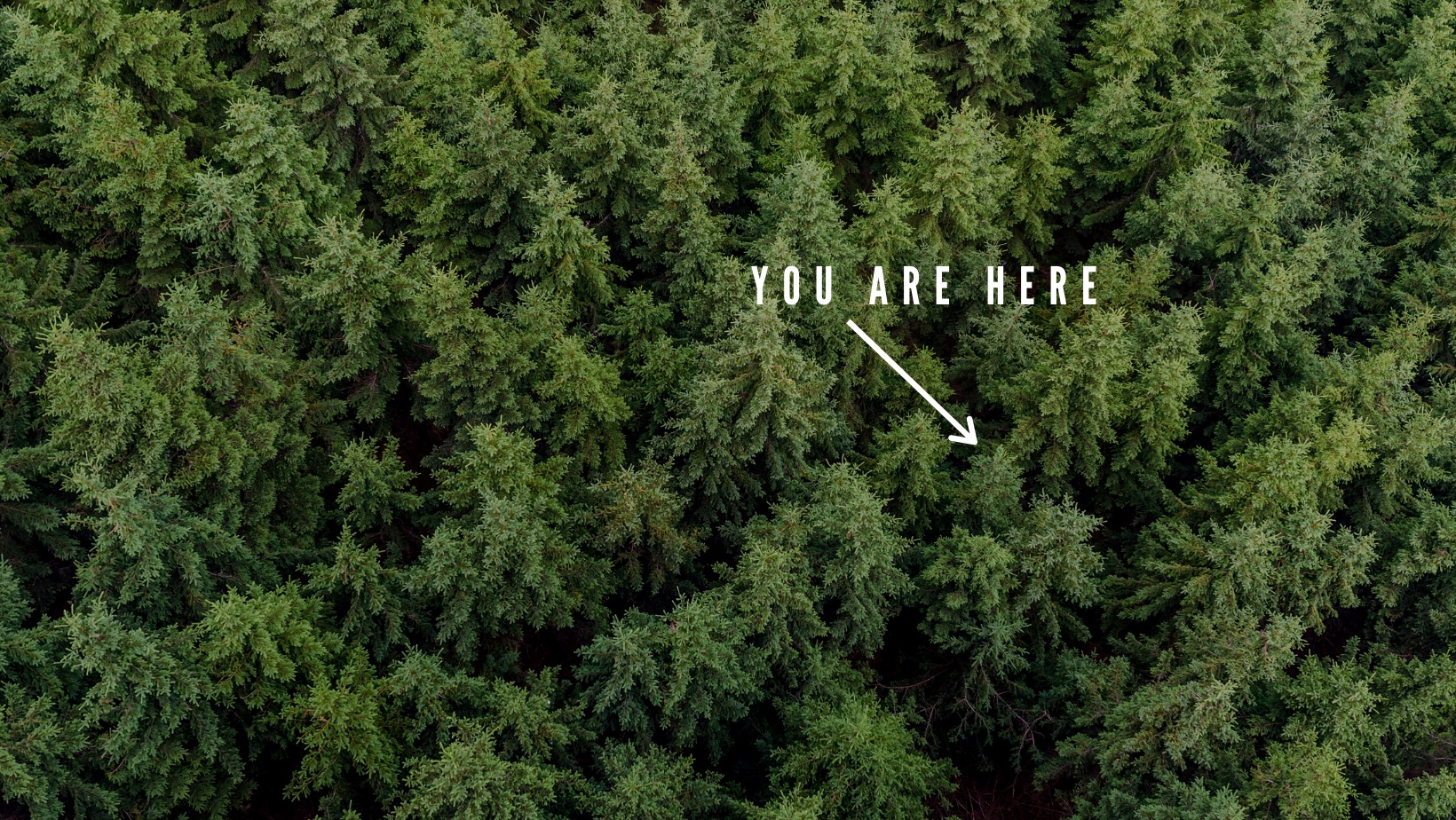 We’ve been waiting. Waiting for 2020 to end and 2021 to finally arrive. But the turn of the calendar didn’t solve our problems – in fact, not much feels different at all. If anything, it feels like a continued or even an increased sense of unknown, uncertainty, and chaos.
We’ve been waiting. Waiting for 2020 to end and 2021 to finally arrive. But the turn of the calendar didn’t solve our problems – in fact, not much feels different at all. If anything, it feels like a continued or even an increased sense of unknown, uncertainty, and chaos.
Since March 2020, I’ve often felt like I’m in the middle of a dense forest with no obvious way out. My “way” has become one of putting one foot in front of the other, literally taking the next step, and then the next. Most days, this helps me feel like I’m making progress, albeit slow.
My consulting and executive coaching work focuses on helping leaders and their organizations navigate change and transition. These days, I lean on my own practices…a lot. One of my favorite sources is the work of William Bridges and the Bridges Transition Model. In his book, “Managing Transitions,” he presents the stages of transition: Letting Go, the Neutral Zone, and the New Beginning. Let’s take a look at the Neutral Zone he describes.
The Neutral Zone
“It’s a time when all the old clarities break down and everything is in flux. Things are up in the air. Nothing is a given anymore, and anything could happen. No one knows the answers: one person says one thing and someone else says something completely different.”
Sound familiar?
This Neutral Zone is a huge chasm of discomfort between an ending and a new beginning. We’re waiting – for a new president to take office, for spring to come, for a vaccine to be widely available, to return to school and work, to hug our friends and family, and to travel. Waiting, waiting, waiting. Telling yourself it’ll be worth the wait, but also feeling exhausted, isolated, and worried because time can feel like a finite resource.
Bridges continues, “One of the most difficult aspects of the Neutral Zone is that most people don’t understand it. They expect to be able to move straight from the old to the new. But this isn’t a trip from one side of the street to the other. It’s a journey from one identity to another, and that kind of journey takes some time. The attitudes, outlook, values, self-images, and ways of thinking that were functional in the past have to ‘die’ before people can be ready for life in the present.”
So, what do we do in this neutral zone? What do we do while we wait? How are you in this zone? Probably like you, one day I’m up, the next I’m down. Some days I’m optimistic, others, I can’t find that optimism no matter what I do or how hard I try.
But hang on…there’s hope!
As we’ve sustained in this abyss now for nearly 12 months, I’m learning to be with it and also recognize it for its gifts and opportunity. Somehow, it helps to know we’re all in it together…it literally feels like there’s not one person on the planet with a “ticket” to escape this time of pandemic, social and racial injustice and unrest, and political turmoil. We’re faced with doing our work and living our life the best we can. What feels most right to me is openness, kindness, compassion, flexibility.
“This is not the wasted time of meaningless waiting and confusion that it sometimes seems to be,” offers Bridges. “It’s a time when reorientation and redefinition must take place, and people need to understand that.”
Yes, it’s a time of anxiety and even chaos, but also it is a time when we’re more open to new ideas and opportunity. I remind myself daily that there’s power in this place. For me:
- Priorities have become clearer, and I realize what’s most important in my life.
- I can do with less. A lot less, in fact: money, material things, activities, work hustle…all the busyness
- Losing what “was” is teaching me to exercise my creativity and look for new opportunities to cultivate and apply myself – my interests, skills, talent, and experience. Coupling this with new insight around my priorities is giving way to a new and more aligned path.
- I’m reminded to celebrate the highs and the wins, even the smallest wins (especially those!)
- I look for the lessons in the lows and greatest challenges.
- I realize that my happiness and power come from within. I’m developing my spirituality practice to help me tap into that.
Since March, I’ve discovered that not only does my old way not work now, but I no longer even wish for that way. There are many things I quite like about this middle place and how the present is informing what I’m building. I’m learning to trust myself and my intuition and inner voice much more every day.
How are you finding ways to maximize and leverage your neutral zone?
 Hi, I’m Jeanie Duncan. I work with individuals and organizations as a transformation partner to help them unlock their Truth, discover authentic value, and create meaningful impact in the world. I believe when we are truly aligned with our purpose, we can live and perform at our highest potential. With over 25 years of experience as an executive, CEO, consultant, coach, and writer, I offer strategic, knowledgeable, and experienced guidance for those who are ready to take the courageous leap toward true transformation.
Hi, I’m Jeanie Duncan. I work with individuals and organizations as a transformation partner to help them unlock their Truth, discover authentic value, and create meaningful impact in the world. I believe when we are truly aligned with our purpose, we can live and perform at our highest potential. With over 25 years of experience as an executive, CEO, consultant, coach, and writer, I offer strategic, knowledgeable, and experienced guidance for those who are ready to take the courageous leap toward true transformation.


 Hi, I’m Jeanie Duncan. I work with individuals and organizations as a transformation partner to help them unlock their Truth, discover authentic value, and create meaningful impact in the world. I believe when we are truly aligned with our purpose, we can live and perform at our highest potential. With over 25 years of experience as an executive, CEO, consultant, and coach, I offer strategic, knowledgeable, and experienced guidance for those who are ready to take the courageous leap toward true transformation.
Hi, I’m Jeanie Duncan. I work with individuals and organizations as a transformation partner to help them unlock their Truth, discover authentic value, and create meaningful impact in the world. I believe when we are truly aligned with our purpose, we can live and perform at our highest potential. With over 25 years of experience as an executive, CEO, consultant, and coach, I offer strategic, knowledgeable, and experienced guidance for those who are ready to take the courageous leap toward true transformation. 





 Hi, I’m Jeanie Duncan. I work with individuals and organizations as a transformation partner to help them unlock their Truth, discover authentic value, and create meaningful impact in the world. I believe when we are truly aligned with our purpose, we can live and perform at our highest potential. With over 25 years of experience as an executive, CEO, consultant, coach, and writer, I offer strategic, knowledgeable, and experienced guidance for those who are ready to take the courageous leap toward true transformation.
Hi, I’m Jeanie Duncan. I work with individuals and organizations as a transformation partner to help them unlock their Truth, discover authentic value, and create meaningful impact in the world. I believe when we are truly aligned with our purpose, we can live and perform at our highest potential. With over 25 years of experience as an executive, CEO, consultant, coach, and writer, I offer strategic, knowledgeable, and experienced guidance for those who are ready to take the courageous leap toward true transformation. 
 Remember the days when we could physically gather for meetings, programs, and events at work? I find myself longing for it as we’re about to “lap ourselves,” approaching month #11 in the COVID era.
Remember the days when we could physically gather for meetings, programs, and events at work? I find myself longing for it as we’re about to “lap ourselves,” approaching month #11 in the COVID era. Hi, I’m Jeanie Duncan. I work with individuals and organizations as a transformation partner to help them unlock their Truth, discover authentic value, and create meaningful impact in the world. I believe when we are truly aligned with our purpose, we can live and perform at our highest potential. With over 25 years of experience as an executive, CEO, consultant, coach, and writer, I offer strategic, knowledgeable, and experienced guidance for those who are ready to take the courageous leap toward true transformation.
Hi, I’m Jeanie Duncan. I work with individuals and organizations as a transformation partner to help them unlock their Truth, discover authentic value, and create meaningful impact in the world. I believe when we are truly aligned with our purpose, we can live and perform at our highest potential. With over 25 years of experience as an executive, CEO, consultant, coach, and writer, I offer strategic, knowledgeable, and experienced guidance for those who are ready to take the courageous leap toward true transformation. 
 We’ve been waiting. Waiting for 2020 to end and 2021 to finally arrive. But the turn of the calendar didn’t solve our problems – in fact, not much feels different at all. If anything, it feels like a continued or even an increased sense of unknown, uncertainty, and chaos.
We’ve been waiting. Waiting for 2020 to end and 2021 to finally arrive. But the turn of the calendar didn’t solve our problems – in fact, not much feels different at all. If anything, it feels like a continued or even an increased sense of unknown, uncertainty, and chaos.
Recent Comments